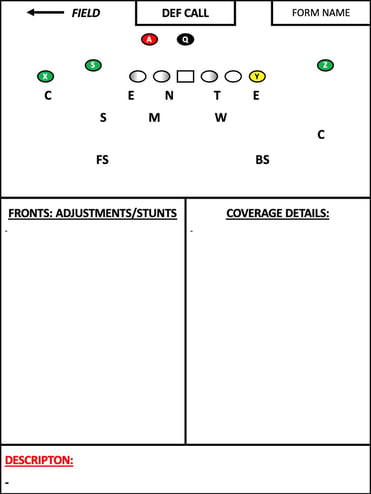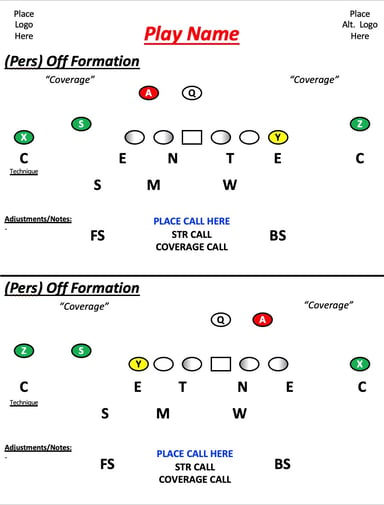At the conclusion of every football season, programs look to change, upgrade and improve a variety of facility items; turf, weight room equipment, locker rooms, and...
Five Tips for Designing Your Defensive Playbook from Scratch
Creating a playbook from scratch can be a daunting task. However, regardless if offense or defense, the most critical part of information distribution is found in the playbook you will use to teach your system. Here are five tips to get you started.
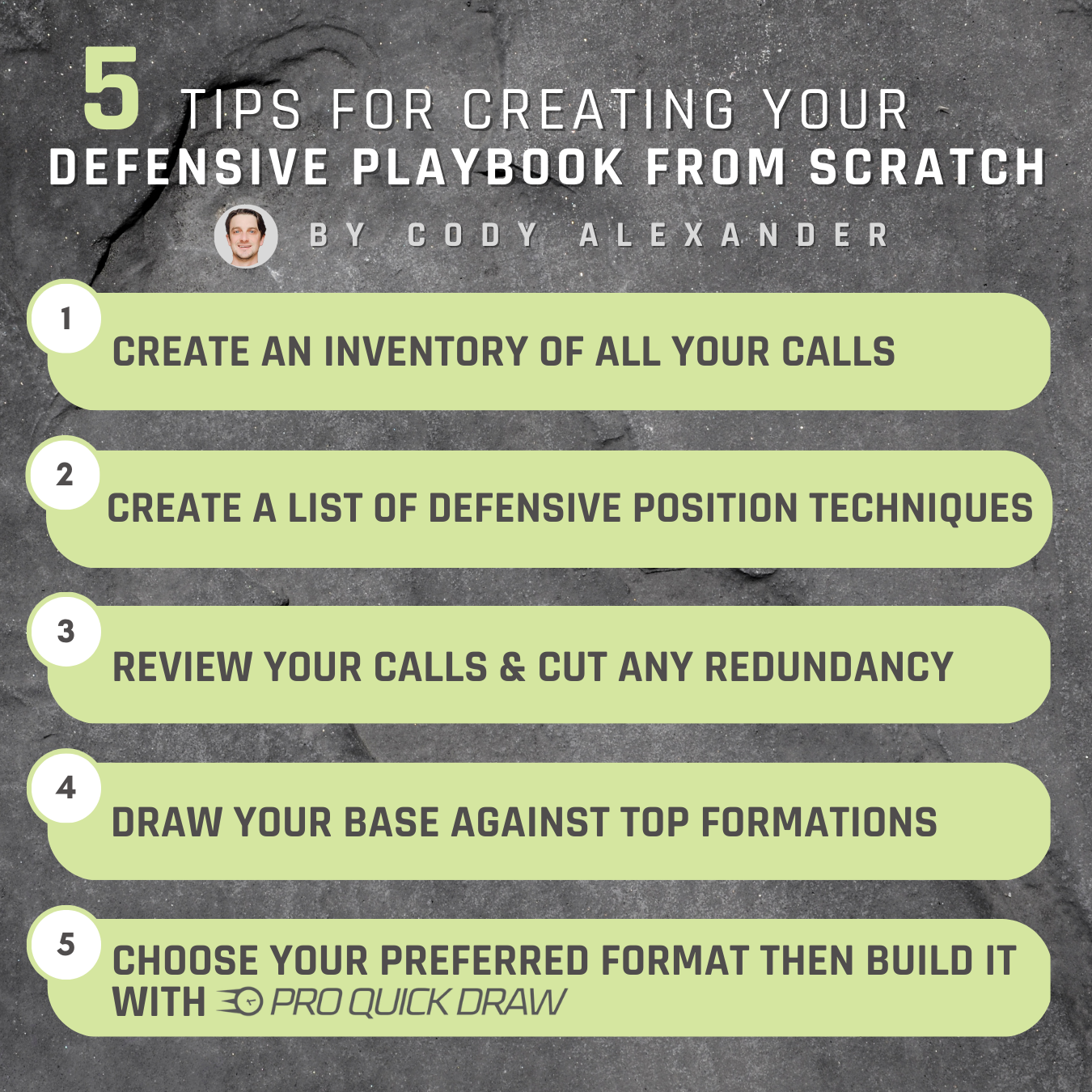
1. CREATE AN INVENTORY OF YOUR CALLS
Making a playbook from scratch is daunting. It would be best to list all the calls you want to carry into the season to ease the task. Yes, weekly tweaks and even new calls will be created for certain situations, but you must be concise when creating a playbook from thin air. What is your base? What do you need? Leave the exotic "wants" for later done the road.
I like to list everything on a whiteboard and put them into families. Mine go as follows: Base fits, Movements (base stunts), off-ball Simulated/Replacement Pressures, five-man pressures, and then Hots/Max blitzes. Once most of your calls are written down, you can go deeper by separating packaged calls (things that go together) or Blitz the Formations (BTFs). An example of this would be my B-gap Creepers Dak and Brady. We can package them to attack a TE by using the tag Texans.
Make sure to look at coverages. Your inventory should be a master list of calls from fronts, calls, and coverages. Some defenses like to separate their call families by coverage. If that is the case, start with coverages and list the pressures under them to create your families. I even go as far as separating 3rd Down calls by front structure (ex. - Boss, Single Mug, Double Mug). The point of this exercise is to write down everything you want to run and feel like you need going into the season. Without a master list, you can't build an install.
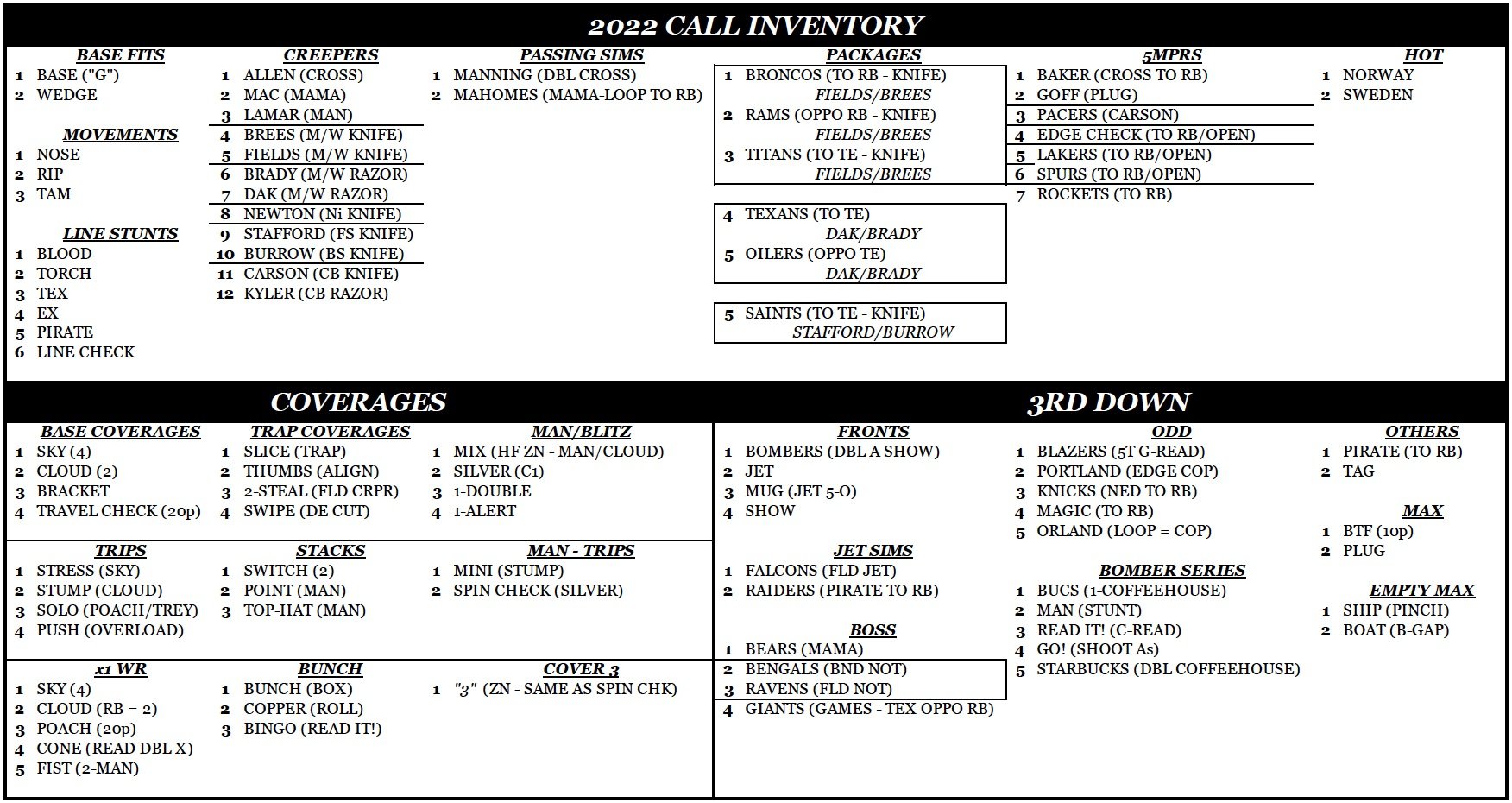
2. REVIEW YOUR CALLS AND CUT REDUNDANCY
Now that you have a master list of calls, the daunting task of creating an install starts. Before drawing your playbook, you need to streamline your inventory. Remember, you have to teach this to your players. The list should illuminate any redundancy within your call structure. Like pressures should be whittled down or placed into different families. With everything on the board, you should see if you have too many calls or need more.
One area of coaching often overlooked is pedagogy or the method and practice of teaching. Creating an inventory and putting calls into families force you to look objectively at what your players are asking to run. If names within families match, it can make your athletes understand. You could use Cities for your Creepers and States for your five-man pressures. Regardless of what you choose, make it consistent and communicative.
3. CREATE A LIST OF DEFENSIVE TECHNIQUES
Based on your call board, you must decide what techniques are required. One overlooked aspect of creating a playbook is the little details, such as formation adjustments and the basic techniques needed to run the calls. When you go to make the playbook, it is easier to denote techniques as you go. Creating a draft of techniques can also highlight deficiencies and redundancy in your teaching. A great example is when you have the same name for two different techniques. Confusion can occur if your LBs and D-line use the same term but two different techniques. Creating a master list would expose this issue before stepping on the field.
4. DRAW YOUR BASE AGAINST TOP FORMATIONS
Now that all the finer points are established, and you have created a master list of calls, you need to draw your base structure against the top formations. I always like to draw everything out before I put it in a digital playbook. When you write things out, it can unlock your brain in regard to issues down with alignments. In this process, you don't need to have the finer details you will put in the playbook. In essence, you are creating a rough draft that you can use when you go to make the final product.
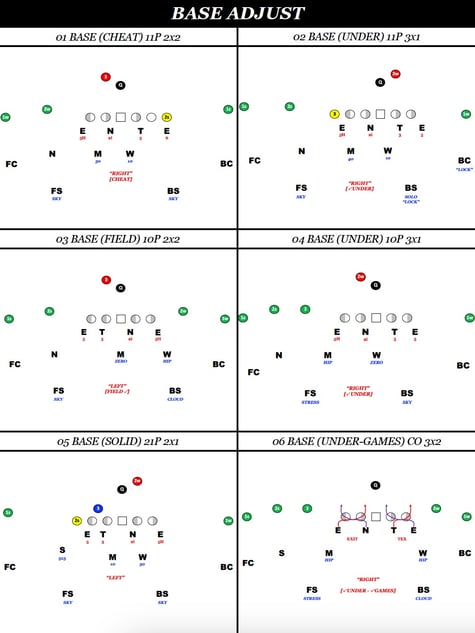
5. CHOOSE YOUR PREFERRED FORMAT, THEN CREATE WITH PRO QUICK DRAW
Choosing a playbook format is essential. The presentation of information draws your players and coaches into the process. It is the "hook." Playbooks lose meaning if they are sloppy or hold too much information (or not enough). There are several main ways coaches like to distill their information in playbooks:
DIAGRAM & LIST: In this playbook, you put a picture of the base play call and list the players' responsibilities. This playbook is usually seen on the offensive side of the ball.
EXPLANATION STYLE: This playbook has a diagram at the top and two long columns at the bottom.
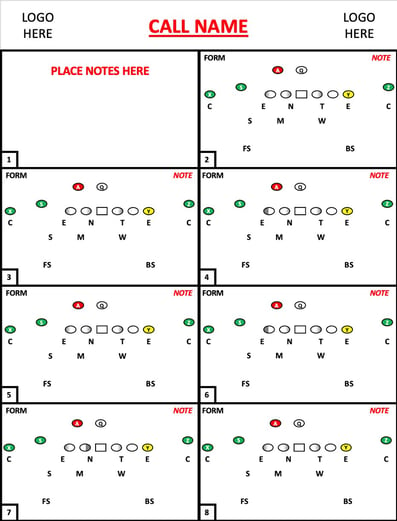
Each playbook would then follow with a six to eight-box page that illustrates all the different variations. This could range from popular or problem motions to checks and variations of different formations and alignments for offense and defense. Regardless of what style you choose, Pro Quick Draw amplifies your playbook and streamlines your workflow. You can even customize your templates!
Have a plan and execute! These five tips will give you a pathway to create a playbook that is clear, concise, and helpful to your staff and players. Information is just jargon if it can be put together in a cohesive manner that can be taught. Playbooks are the foundation of the teaching process and a starting point for any scheme.
Follow Cody Alexander on Social:

